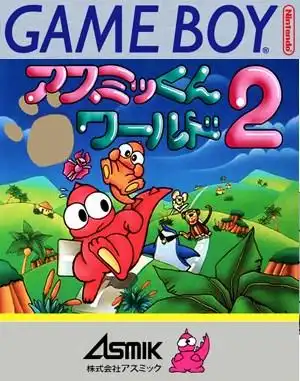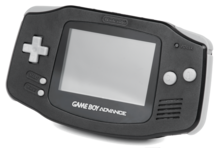Exploring the vast library of the original Game Boy often leads to discovering fascinating, lesser-known titles. One such curiosity for Western players is Asmik-kun World 2 Game Boy, a game that never officially left Japan but offers a distinct gameplay experience. Released back in 1991, this little cartridge holds a quirky charm that's worth a look for any dedicated retro enthusiast.
What Exactly is Asmik-kun World 2?
Unlike many platformers or RPGs common on the system, Asmik-kun World 2 falls into a less common genre often described as a "trap-em-up" or environmental puzzle game. Developed and published by Asmik, it's a direct sequel to a Famicom game, but the Game Boy title stands on its own with its unique mechanics.
The core idea revolves around guiding the titular character, Asmik-kun, through various stages. However, you don't directly control Asmik-kun's movement. Instead, you place various items or "traps" (though they are more like helpful tools or obstacles) on the screen to influence his path.
The Unique Gameplay Loop
Think of it like a Rube Goldberg machine, but simpler and focused on navigation. Asmik-kun will often walk automatically, and it's your job to strategically place blocks, springs, conveyor belts, and other gadgets to ensure he avoids hazards and reaches his goal.
The primary objective in many levels is to rescue children scattered throughout the stage and then guide Asmik-kun and the rescued kids safely to the exit. Enemies patrol the areas, and placing items correctly is key to diverting Asmik-kun (and the kids) away from danger or even using the environment to deal with foes indirectly. It requires careful planning and observation of Asmik-kun's predictable movements.
Why You Might Not Have Played It
As mentioned, the biggest reason Asmik-kun World 2 Game Boy remains relatively obscure outside of dedicated import circles is its Japan-exclusive release. During the peak of the Game Boy's popularity, many unique and experimental titles stayed within the Japanese market, making them hidden gems (or sometimes, just hidden) for players elsewhere.
This lack of localization meant no official English release, no marketing in North America or Europe, and therefore, it flew completely under the radar for most retro gamers until the age of emulation and online communities.
Is It Worth Tracking Down?
For fans of unique puzzle mechanics and those interested in the road less traveled in retro gaming, Asmik-kun World 2 offers a refreshing change of pace. Its gameplay loop of manipulating the environment rather than directly controlling the character is quite distinct for the era and platform.
While the graphics and sound are typical of early Game Boy titles, the clever level design and the satisfaction of successfully navigating a complex stage using your placed items provide a rewarding challenge. It's a great example of how developers experimented with different genres on the limited hardware.
If you're looking to explore the deeper cuts of the Game Boy library and appreciate quirky Japanese puzzle games, Asmik-kun World 2 Game Boy is definitely a title to investigate.
FAQ
- What genre is Asmik-kun World 2? It's best described as a "trap-em-up" or environmental puzzle game.
- When was Asmik-kun World 2 released? It was released in 1991.
- Was Asmik-kun World 2 released outside of Japan? No, it was exclusively released in Japan.
- How do you play Asmik-kun World 2? You place items on the screen to guide the character, Asmik-kun, through levels to rescue children and reach the exit, rather than controlling him directly.
Final Thoughts
Asmik-kun World 2 might not be a household name, but it represents the kind of creative design found in the vast Game Boy library. Its unique puzzle mechanics make it a fascinating footnote in retro gaming history and a fun challenge for anyone willing to explore beyond the most famous titles. It's a neat reminder that even on a simple handheld, developers were trying out clever, unconventional ideas.


